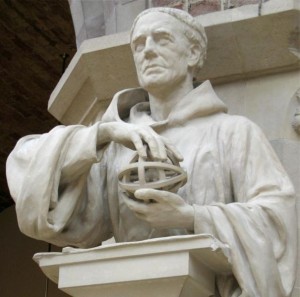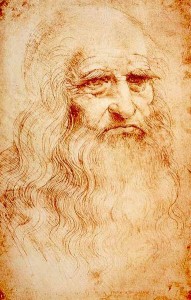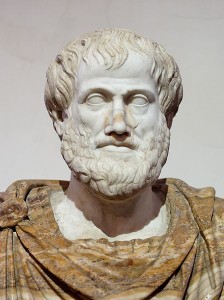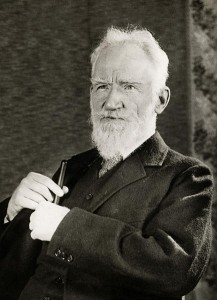Perception is Projection
Just a few weeks ago I made a blog post entitled “I Wouldn’t Have Seen if If I Hadn’t Believed It.” I’m surprised that I need to revisit it so soon after posting it, but after the furor resulting from a side issue related to my post last week, I feel it’s important to do so.
The statement that was the title of last week’s post was by Marshall McLuhan, and it’s something I agree with. The same idea is presented in NLP where there is a belief that “perception is projection.”
The basic concept is very simple: if you have an idea or perception of the way things should be—that is, if you have a belief or set of beliefs about something—you will project that on your own actions and the actions of others. If you don’t believe something is possible, you won’t be able to project a way to do it. Your perceptions, whether they are based on reality or not, will influence and quite literally control everything you do or think. I quoted Henry Ford on this: “Whether you think you can, or you think you can’t—you’re right.”
If you don’t think magick is real, you will never be able to do magick. If you don’t think you can stop smoking, run in a marathon, or graduate at the top of your class, you never will be able to do those things. Your unconscious mind enforces this upon you. You project the impossibility of doing something and your unconscious works overtime to make sure that, indeed, it remains impossible for you to do it.
Some of you might say that this isn’t really true. After all, if I’m broke today I can’t earn a million dollars by tomorrow and this fact doesn’t matter what I believe. That is true, so there are some limitations. In NLP, the standard saying is that if someone else has done something, you can do it to. To that I would add if no one has done it before, it may take a little longer.
The difficult we do immediately. The impossible takes a little longer.
—Attributed to the U.S. Seabees from WWII
That doesn’t mean it’s impossible to achieve your dreams, only that it’s important to realistically assess your potential to achieve them. It may be more challenging to achieve your dreams or magickal goals; it may take more than one lifetime. But that doesn’t mean you cannot achieve them or something similar.
Polymath
Some people have questioned whether one person can be an expert in many things. Why? Remember, perception is projection. They cannot perceive of a person who is an expert in many fields, therefore they deny the possibility of such a person.
There is actually a term for an expert in many areas. The term is polymath, and there is a long history of people who have been acclaimed polymaths.
Imhotep (27th century b.c.e.)
Statue of Imhotep in the Louvre (Paris, France)
He was a Chancellor to the king of Egypt, a physician, considered astute enough to be first in line of succession after the king of Upper Egypt. He was the administrator of the Great Palace, the High Priest of Heliopolis, architect, Chief Carpenter, Chief Sculptor, and Maker of Vases in Chief.
Aristotle (384 b.c.e.–322 b.c.e.)
Statue or Aristotle in the National Museum of Rome.
He was an expert in physics, metaphysics, poetry, theater, music, logic, rhetoric, linguistics, politics, government, ethics, biology, and zoology.
Archimedes (about 287–212 b.c.e.)
He was a mathematician, a physicist, an engineer, an inventor, and an astronomer.
Hypatia (4th century c.e.)
An expert and teacher in the fields of mathematics, philosophy and astronomy.
Ja’far al-Sadiq (702-765);
He was an astronomer, an alchemist, an Imam, a noted Islamic scholar, a respected Islamic theologian, a writer, a philosopher, a physician, a physicist and a scientist.
Maimonides (1135–1204)
He was rabbi, a philosopher, a theologian, a physician to Saladin, a mathematician, an astronomer, and a scientist.
Roger Bacon (1220–1292)

Statue of Roger Bacon at the Oxford University Museum of Natural History
Photo by Michael Reeve
Bacon was a Franciscan friar and a Master at Oxford. He was acknowledged as an expert in philosophy, optics, languages, alchemy, and mathematics.
Leonardo da Vinci (1452–1519)

Self-portrait in the Biblioteca Reale (Turin, Italy)
He was a polymath if ever there was one! He was an expert artist (drawing, painting, sculpting), scientist, architect and engineer. He was also a mathematician, a physicist, a philosopher, an alchemist, a biologist, a naturalist, an anatomist and a geologist. His list of expertise goes on to include astronomy, cartography, botany, cryptography, music, and much more.
This is just a small sampling of polymaths of the past. There are many polymaths living today, too.
* * *
So if someone says nobody can be an expert in many fields, the truth is they’re exposing the limitations they put on themselves.
Oh, there’s one more polymath I’d like to mention, George Bernard Shaw. He’s most famous for being an Irish playwright and perhaps is best known for his play Pygmalion which was the basis for the musical My Fair Lady. He was also a musician, a literary critic, a journalist, an essayist, and a novelist. He wrote on topics such as education, marriage, religion, government, and health care.
Up until today, he is the only person to have received both a Nobel Prize in Literature and an Oscar. I’d like to leave you with his quote:
People who say it cannot be done should not interrupt those who are doing it.













I couldn’t agree more… then again, maybe I can!
We rely on physics to tell us what in “reality” is possible. Now that we have Quantum Physics properly developed and even a working 1 bit quantum computer…
We are in for the ride of our lives!
Regards…